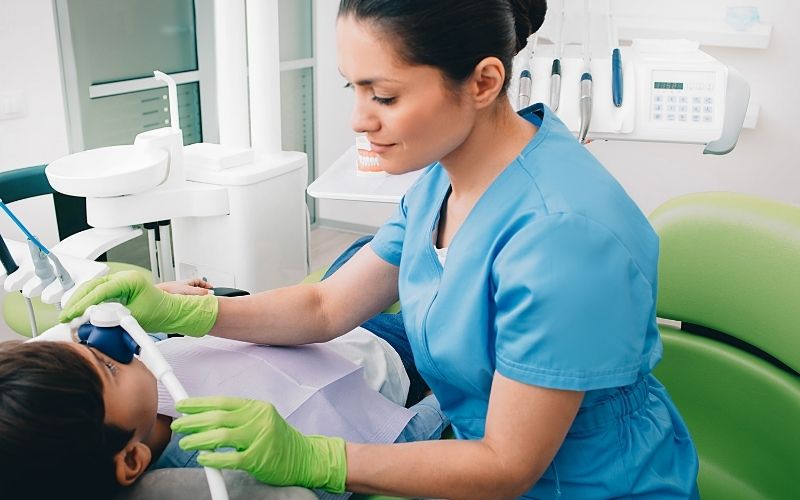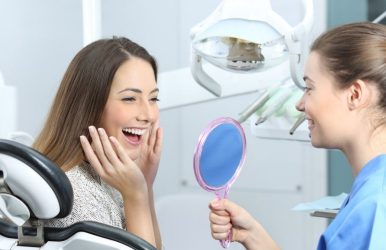Anxiety-free dentistry can be achieved by administering sedatives to the patient receiving dental treatment. Sedating the patient can take different forms, such as anti-anxiety drugs, depressants, tranquilizers, nitrous oxide, or laughing gas.
It is also referred to as sedation dentistry. It’s a great way to cope with or overcome dental anxiety or dental phobia, which is the fear of going to the dentist. Dental anxiety is the primary reason so many people who ought to be receiving dental treatment put their dental care on hold unless they can no longer bear the pain in their oral cavities.
This article will discuss the common types of anxiety-free dentistry, how to find a dentist’s office that offers a personalized and anxiety-free dental experience, and who should benefit from this type of dentistry.
Common Type of Anxiety-Free Dentistry
Below are the standard ways patients deal with or overcome their fears of any possible pain they might experience during their dental appointment:
Oral Sedation
Oral sedation or sedatives is the most commonly administered dental sedation to help patients cope with dental anxiety in Canada and the U.S. A prominent example of oral sedation is Diazepam.
It’s ingested roughly an hour before going to the dentist. This is the allotted time to let the medication take effect before their dental treatment or appointment. This kind of sedative doesn’t put you to sleep. You’ll be awake or conscious, but you’ll be less tense and anxious about the procedure to be carried out on your teeth. This dental sedation is used on patients whose dental anxiety is not that intense.
Oral sedation dentistry is for patients who can manage to stay awake and alert for the procedure as long as they feel relaxed. This is a common way to achieve anxiety-free dentistry.
IV Sedation
In this type of sedation dentistry, the sedation is given to the patients through an intravenous injection. This sedation goes straight to the bloodstream. This type of sedation puts you in a very calm or relaxed state throughout your dental appointment. In addition, IV sedatives relieve you of anxiety because they put you in a state where you’ll feel so sleepy and subconscious that you’ll forget most of what happened during your visit to the dentist’s office.
This is another common way to achieve anxiety-free dentistry.
Laughing Gas or Nitrous Oxide

The laughing gas or nitrous oxide is a gaseous sedative administered through a mask on your face. Once this gas is inhaled, it frees you of tension and puts you in a relaxed state through your procedures.
You’ll hardly register any pain (thanks to the anesthetic that will complement the sedation) that might occur during these procedures. This sedation also wears off rapidly.
Dentists sometimes permit their patients to drive themselves back after dental care or treatment when it comes to this type of anxiety-free dentistry. This only happens when the dentists are sure that the sedative effects have worn off completely.
Difference Between Sedatives and Anesthetics
It is important to note that sedatives are different from anesthetics. Sedatives keep you awake and alert enough to respond to the dentist. It doesn’t numb you to the pain you’ll feel, but it will keep you relaxed during the procedure or treatment. They take away fears that come with being at the dentist’s clinic.
On the other hand, anesthetics are used instead of sedatives when your treatment requires dental surgery. It renders the patient unconscious and numb to the pain that might occur during such procedures.
The video below will explain how anesthesia exactly works. Let’s have a quick look:
How to Know the Most Suitable Option of Anxiety-Free Dentistry for you?
It’s ideal for examining all the available options for anxiety-free dentistry before going for any particular one.
You may want to go for IV sedation, thinking it’s the best because it relieves you of fear better than other anxiety-free dental options. But the fact is, it is suitable for just specific kinds of treatment. Also, it must be administered and supervised by someone who’s specially trained for the task.
Also, different sedatives have different purposes, depending on the reason for your dental appointment. For example, some of them can enhance your pain tolerance when the dentist is working on you. However, they may not be enough on their own. Hence, you need to use local anesthetics to help with the numbness of the oral nerves.
Who Should Benefit from Anxiety-Free Dentistry?
People who experience anxiety disorders can become anxious about many things, including a visit to the dentist.
People who suffer from dental phobia or fear of the dentist also qualify. This condition can be birthed from previous negative experiences with dental care. These experiences root fear and discomfort in them each time they have a dental appointment.
People with smaller mouth sizes make it difficult for the dentist to access the molars and tissue at the back of their mouth during the dental checkup.
People with ultra-sensitive oral nerves and resistance to anesthetic drugs such as Novocain and Benzocaine can also benefit.
If you’re such a person, ensure you talk to your dentist about it. They must know that getting specific dental treatments such as fillings, extractions, root canal therapy, bridges, crown, and dental implants will be easier to undergo.
If your dental appointment is for procedures such as a dental x-ray, tooth whitening, or cleaning, you may not be given sedation for your anxiety. It is provided only when the thought of even minor procedures triggers intense fear and discomfort.
Benefits of Anxiety-Free Dentistry
Anxiety-free dentistry helps you relax and stay calm during the dental appointment, regardless of the length. Besides, it makes the dental procedure smooth, with maximum cooperation, and more effective in helping certain patients achieve a healthier dentition.


